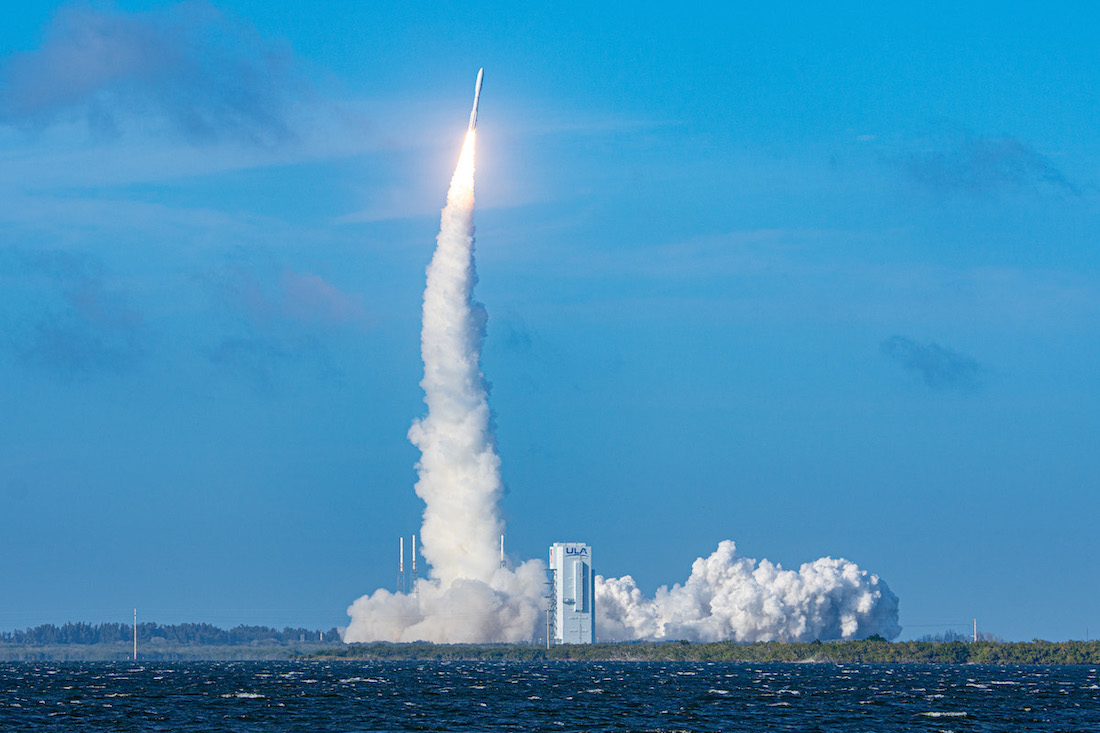Space News & Blog Articles
GOES-T weather satellite resumes orbit-raising after minor snag
 Artist’s concept of the GOES-T satellite in orbit. Credit: Lockheed Martin
Artist’s concept of the GOES-T satellite in orbit. Credit: Lockheed Martin
A new NOAA weather satellite that launched from Cape Canaveral last week has resumed orbit-raising after the spacecraft aborted its first major post-launch maneuver, moving toward its operational geostationary orbit more than 22,000 miles over the equator.
The GOES-T weather satellite’s main engine was supposed to complete the first in a series of orbit-raising burns March 3, but NOAA said the maneuver cut off prematurely. John Leslie, a NOAA spokesperson, said the spacecraft automatically shut down the engine.
A temperature sensor in the satellites liquid apogee engine was set with an incorrect threshold, Leslie said.
GOES-T is the third in a series of four spacecraft in NOAA’s current generation of weather-monitoring satellites in geostationary orbit. NOAA’s fleet of Geostationary Operational Environmental Satellites, or GOES program, tracks hurricanes, severe storms, wildfires, dust storms, and other weather events in real-time, giving forecasters a minute-by-minute glimpse of evolving conditions.
Officials said GOES-T, which will be renamed GOES-18 after reaching its final orbit, debuted several changes from the previous two satellites in the series. They included a modified cooling system on the satellite’s main weather imaging instrument, and an upgraded magnetometer for space weather observations.
Another change was in the location of a temperature sensor in the propulsion system to provide improved information about the engine’s performance, Leslie said. In the new location, the sensor was exposed to higher temperatures than during previous missions, prompting the abort in GOES-T’s first orbit-raising burn.
“The spacecraft’s autonomy systems automatically shut down the engine due to what it perceived as a problem because the flight software’s operational thresholds for the sensor were not adjusted to account for its new location,” Leslie said. “However, the temperatures measured were normal for the sensor’s new location.”
Leslie said GOES-T was “not in any danger and did not experience any damage.”
Ground teams updated the satellite’s software to account for the sensor’s new location, and GOES-T successfully resumed orbit-raising with a main engine burn March 5, Leslie said.
 NOAA’s GOES-T weather satellite lifts off March 1 on a United Launch Alliance Atlas 5 rocket. Credit: Michael Cain / Spaceflight Now / Coldlife Photography
NOAA’s GOES-T weather satellite lifts off March 1 on a United Launch Alliance Atlas 5 rocket. Credit: Michael Cain / Spaceflight Now / Coldlife Photography
GOES-T, built by Lockheed Martin, lifted off March 1 from Cape Canaveral aboard a United Launch Alliance Atlas 5 rocket.
As planned, the Atlas 5 deployed GOES-T into an elongated, or elliptical, transfer orbit. GOES-T’s engine is needed to reach the satellite’s final operating orbit at geostationary altitude, where the spacecraft will fly at a velocity that matches the rate of Earth’s rotation.
Once they began, the orbit-raising maneuvers were expected to last around two weeks, NOAA officials said before GOES-T’s launch.
After opening protective doors on GOES-T’s instruments, the first images from the new satellite should come down in May, and NOAA plans provide data from the new weather satellite to forecasters on a provisional basis as soon as July. It will enter operational service in early 2023, providing real-time weather data over the Western United States and Pacific Ocean.
This email address is being protected from spambots. You need JavaScript enabled to view it. the author.
Follow Stephen Clark on Twitter: @StephenClark1.
When you subscribe to the SpaceZE News Feed, we will send you an e-mail when there are new updates on the site so you wouldn't miss them.

